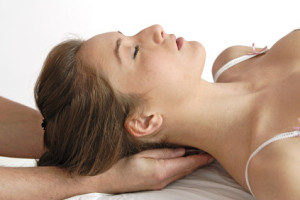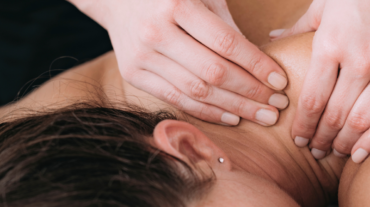
Stress can be caused by a number of different sources including those that are psychological, emotional, behavioral and functional, each of which can be interrelated with one another. In terms of functional causes, these are mostly influences on your musculo-skeletal system and soft tissues, and ultimately may end up disturbing various bodily functions by increasing sympathetic tone and un-regulating your body’s homeostasis. As a result of stress, your body may respond by fluctuating the flow of vital functions such as breathing, blood flow, body temperature, and digestion, while other irregularities may appear in your musculo-skeletal functions. Therefore, some muscles might get tensed and cause dis-alignment in your posture, function, or even disable you because of pain. Manual osteopathy has two approaches to deal with such stress-related conditions. The first step is often identifying the muscles or areas of your body affected by stress by palpating the area. This is then followed by helping to regulate homeostasis in your body, by reducing sympathetic tone.
Some stress-related behaviours and feelings such as anger, fear, or even excitement might cause musculo-skeletal tension. The affected areas often vary from one person to another. Several postural misalignments or even defensive tensions might occur due to stress and anxiety. Furthermore, if that stress or anxiety continues to repeat, those affected soft tissues might get reformed. For instance, responding to stressful situations some people compensate by putting more tension in their cervical (neck) vertebrae, shoulder muscles, or their TMJ joint (jaw joint). This in turn may result in these areas becoming more tight. In such circumstances, your osteopath would be able to palpate and examine those areas, and then help to release the tension in order to relieve pain caused by impinged nerves. It’s worth noting that each person’s defense response and mechanism for dealing with stress is different from another person’s, so it therefore goes without saying that examining and palpating is the best way to figure out what area has been affected.
According to doctor Irvin Korr, a famous doctor of osteopathy, “The most critical effect of manipulation is the reduction of sympathetic tone.” The autonomic nervous system is composed of two parts: Sympathetic Nervous System (SNS) and Parasympathetic Nervous System (PNS). These two systems work together to reach a relatively balanced state, which is called homeostasis. Regulation of homeostasis is really crucial for your body. Stress hormones trigger your SNS to activate a state referred to as “fight or flight.” When we perceive a threat, all your skeletal muscles’ blood vessels begin to enter “alarm reaction,” while all of your internal organs like your digestive system will start to reduce the rate at which they function. This is an excellent adaptation but can only be effective for a relatively small amount of time. If this “fight or flight” state were to extend for a longer period and even persist every day, your homeostasis would get severely unregulated. This in turn would result in exhaustion, ultimately rendering your body more susceptible to diseases due to an impaired immune system.
Manual osteopathic treatments are beneficial for autonomic nervous system balance. They make your body more relaxed by lowering an overactive SNS. In addition, osteopathy aids in determining which muscles, organs or body parts get tense when you are stressed.
Cranio-sacral therapy (a sub-therapy of osteopathy) is also is greatly helpful for stress related pain or discomfort. By releasing sub-occipital sutures in your skull, any irritation in your vagus nerve will reduce strain in related tissues and organs. Your vagus nerve is the primary nerve for parasympathetic nerves which exit your skull skull and pass through your heart, lungs and digestive organs. Working on your sacral area also helps to have beneficial effects on your pelvic organs.
On a closing note, in addition to osteopathic treatment I frequently teach patients exercises, stretches, and some breathing assistance techniques to manage stress and stress-related problems, which are easy and often very effective.







